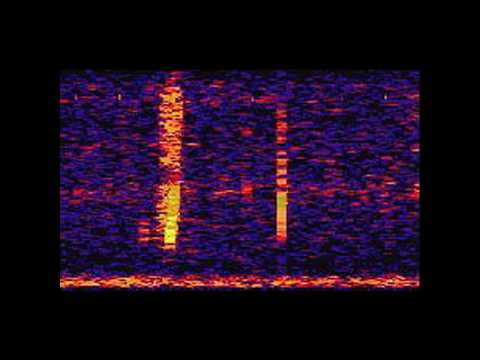In the summer of 1997, the ocean’s depths produced a sound that stunned scientists and ignited imaginations around the globe. Dubbed “The Bloop,” this mysterious noise emerged from the South Pacific, roughly 1,750 kilometers west of Chile, near the coordinates 50°S, 100°W. The Bloop’s origins and nature have since become the subject of intense speculation and debate.
The Bloop was not just any sound; it was extraordinarily loud, detected by hydrophones up to 5,000 kilometers away. The sound was recorded multiple times by the Eastern Equatorial Pacific autonomous hydrophone array, deployed by NOAA (National Oceanic and Atmospheric Administration) in May 1996. This array was originally set up to monitor seismic activity along the East Pacific Rise. The remote location of the sound’s source, in deep water averaging around 4,300 meters, adds to the intrigue surrounding its origins.
Cryptozoologists have been particularly fascinated by the Bloop, speculating that it could be evidence of a colossal unknown sea creature. Various sources, including numerous websites, have echoed the sentiment that the sound matches the profile of a living being, suggesting it must be much larger than the largest known marine animals. However, finding the original source of this quote proves challenging. The attribution to NOAA appears to be unfounded, as NOAA’s standard practice involves simply acknowledging unknown sounds without embellishing them with speculative details about giant cryptids.
The Bloop’s nature has fueled numerous theories, ranging from alien encounters to undiscovered marine giants. The sound’s characteristics—its frequency and amplitude—suggest it is louder than any known animal noise, including that of the blue whale, the largest animal on Earth. This loudness raises questions about whether the Bloop could be attributed to a creature of unprecedented size.
Some have wondered if the Bloop might come from a massive cephalopod, like a giant squid or octopus. Although giant squid have been found washed ashore, and evidence such as sucker marks on whales suggests their presence, no one has confirmed sightings of live specimens. The largest dead squid on record measures about 60 feet, but the potential size of these creatures remains speculative.
Phil Lobel, a marine biologist at Boston University, casts doubt on the cephalopod theory. According to Lobel, cephalopods lack gas-filled sacs, which are necessary to produce such a sound. While he acknowledges that biological origins are plausible, he remains skeptical that a giant squid could be the source of the Bloop.
The Bloop’s enigmatic nature is amplified by its detection system, a relic from the Cold War era. During the 1960s, the U.S. Navy established a network of underwater microphones known as SOSUS (Sound Surveillance System) to monitor Soviet submarines. These hydrophones, positioned hundreds of yards beneath the ocean’s surface, are sensitive to low-frequency sounds that travel long distances within a layer of water known as the “deep sound channel.” This channel allows sound waves to travel with minimal interference from the ocean’s surface or bottom.
Most of the sounds detected by SOSUS are easily identifiable—whales, ships, earthquakes. For instance, NOAA‘s Christopher Fox has categorized various signals, including Train, Whistle, Slowdown, Upsweep, and Gregorian Chant. The Upsweep sound, for example, was traced to an underwater mountain in the South Pacific, which was previously unrecognized as an active geological feature.
Despite these identifications, some sounds, including the Bloop, remain unresolved. The Bloop’s loudness and frequency make it particularly challenging to classify. Its uniqueness has led to wild theories about its origins, from mythical sea creatures to extraterrestrial sources. However, scientific investigation continues to seek natural explanations for the sound.
One plausible theory is that the Bloop could result from underwater volcanic activity or other geological processes. Similar to other oceanic sounds attributed to volcanic activity or seismic events, the Bloop might be a product of natural phenomena rather than an unknown creature or external source.
In summary, while the Bloop has captured the imagination of many, from cryptozoologists to conspiracy theorists, scientific inquiry points to more mundane explanations. The Bloop’s characteristics, while intriguing, align with natural oceanic phenomena that scientists continue to study. The quest to understand the Bloop underscores the complexity of ocean science and the challenges inherent in deciphering the mysteries of the deep.


